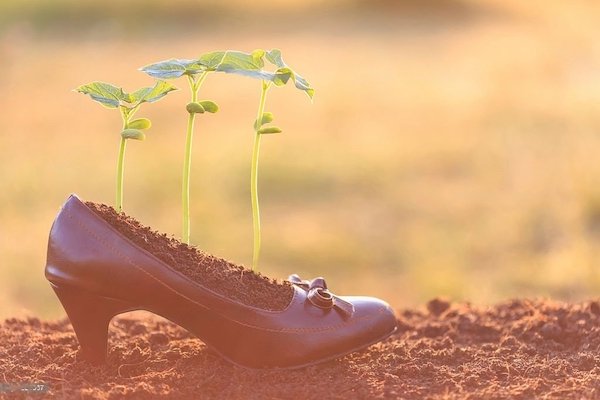
( Image Credit: Source Name / Google Images )
Handmade and mass-produced footwear represent two different approaches to manufacturing, each with its own characteristics and benefits. Handmade footwear is a labor of love, crafted with skill and attention to detail by talented artisans. These shoes are created using traditional techniques and often showcase exquisite craftsmanship.
Each pair is unique and has a sense of artistry, as no two shoes look alike. High-quality materials ensure durability and longevity, making handmade shoes a worthwhile investment. Furthermore, supporting handmade footwear means supporting local artisans and preserving traditional craftsmanship.
On the other hand, mass-produced footwear offers affordability and accessibility. With mechanized processes and larger production scales, these shoes can reach a wide range of consumers at a lower price point. Mass-produced footwear is designed to meet the demands of fast-paced fashion trends and mass markets, providing a variety of styles and options for consumers.
While handmade footwear emphasizes individuality and craftsmanship, mass-produced footwear caters to convenience and affordability. It's important to note that both types have their place in the market, and the choice depends on personal preferences, budget, and values.
Difference Between Fast Fashion And Slow Fashion
Fast and slow fashion are two different approaches to clothing production and consumption, and they have distinct impacts on the environment, labor conditions, and sustainability. Fast fashion is about speed and affordability, aiming to produce inexpensive garments that quickly align with the latest trends.
While it may seem convenient and budget-friendly, fast fashion comes with consequences. The rapid production cycles lead to excessive waste and pollution, as low-quality materials are used, and garments are frequently discarded. The exploitation of cheap labor in developing countries raises concerns about fair wages and working conditions for garment workers.
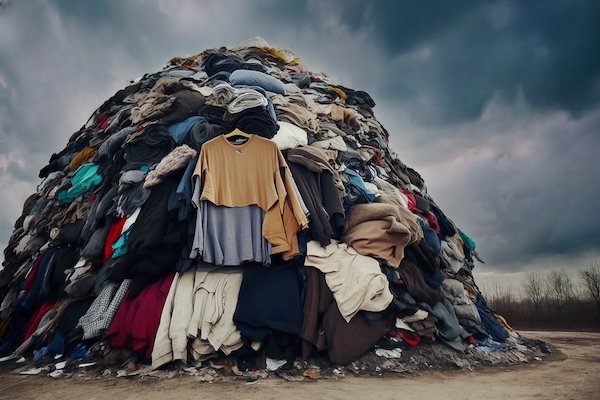
( Image Credit: Source Name / Google Images )
Fast fashion footwear brands swiftly produce large quantities of shoes, often using lower-quality materials and production processes. While it may seem convenient and budget-friendly, it's important to consider the impact on the environment and labor conditions.
Fast fashion brands produce large quantities of inexpensive products, replicating current trends. They prioritize quick turnaround times and low prices to cater to the demands of fast-paced consumer culture. However, this often results in poor working conditions and the exploitation of workers in countries with lower labor costs.
The synthetic materials used in fast fashion have a negative environmental impact and contribute to textile waste. The business model encourages frequent buying and discarding, perpetuating a consumption cycle with significant environmental and social consequences.
In contrast, slow fashion takes a more thoughtful and ethical approach. It emphasizes quality over quantity, promoting durable, timeless clothing lasting longer. Slow fashion brands prioritize sustainable production methods, such as using organic or recycled materials, supporting local artisans, and ensuring fair wages for workers.
One example of slow fashion is supporting local, independent artisans or designers prioritizing sustainability and fair trade. These artisans create unique, high-quality garments using traditional craftsmanship techniques and natural materials. By investing in their creations, consumers can support local economies, preserve cultural heritage, and reduce their environmental footprint. Slow fashion also encourages repairing and upcycling clothing, extending its lifespan and minimizing waste.
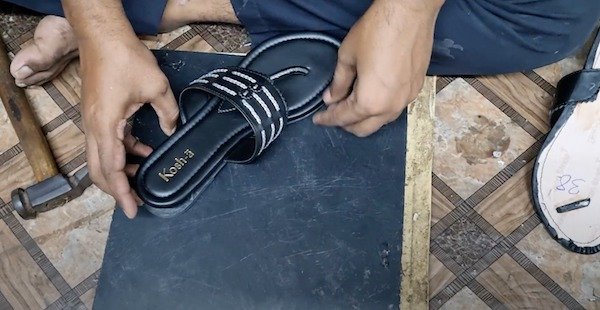
Slow fashion in footwear embodies a more thoughtful and sustainable approach. It emphasizes quality, durability, and ethical production methods. Slow fashion footwear brands prioritize craftsmanship, using high-quality materials and traditional techniques to create unique, long-lasting shoes. Slow fashion footwear encourages conscious consumption, reducing waste and promoting a more sustainable and environmentally friendly fashion industry.
Embracing slow fashion allows us to impact the environment positively, promote fair labor practices, and build a more sustainable and ethical fashion industry.
Kosh-a’s Commitment To Slow Fashion
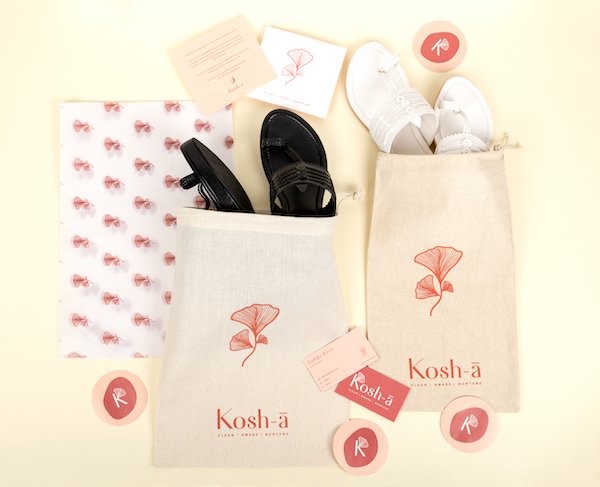
Our brand deeply values and respects our environment and its precious natural habitat. This commitment has led us to explore alternatives to using animal skin, opting for alternate forms of leather instead. We take pride in our small batch production approach, which allows us to use raw materials from small producers.
Skilled artisans meticulously handcrafted these shoes, creating a unique and individualized pair. This dedication to craftsmanship guarantees that every Kosh-a product is crafted with the utmost quality and durability. By doing so, we eliminate excess production and wastage. We don't feel pressured to constantly follow fleeting fashion trends, which means our styles and quantities remain limited but intentional.
During the curation process, we had to select names that embody traditional Indian values while also reflecting a modern sensibility. We aimed to create versatile and distinct names for both flats and wedges. Each shoe’s name signifies its color's purpose and explains its selection. These names serve as a testament to our strong brand identity, showcasing our commitment to preserving Indian heritage while embracing contemporary aesthetics.
Our manufacturing partners share our vision and have no minimum order quantities (MOQs), which encourages the production of small batches. When it comes to packaging, we prioritize sustainability. All our packaging materials are carefully chosen to be sustainable, recyclable, and 100% plastic-free.
We believe in minimizing our ecological footprint and ensuring our packaging aligns with our environmental commitment. We aim to provide our customers with products that align with their values and contribute to a more eco-conscious and responsible lifestyle.
If Kosh-a were to be described in three words, we would say - Clean, Aware, and Nurture.
Future Of The Fashion Industry
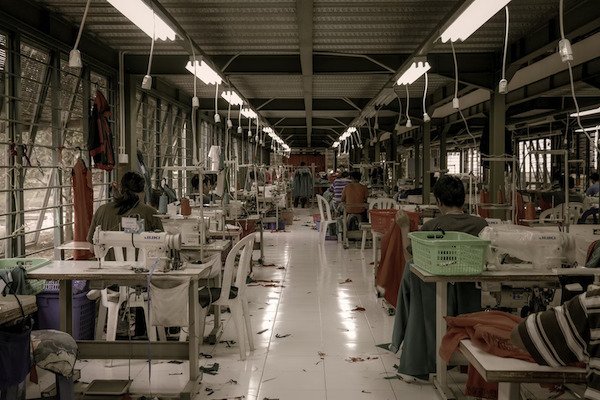
In the coming years, we can expect an interesting evolution in the relationship between slow and fast fashion. While fast fashion has been the go-to choice for its affordability and trendy designs, the tides are gradually shifting towards a more sustainable and ethical approach embraced by slow fashion. The future holds a promising scenario where consumers increasingly prioritize quality, durability, and responsible sourcing.
Slow fashion brands will thrive as they offer timeless pieces that are meticulously crafted, encouraging conscious consumption and mindful wardrobe choices. These brands will champion transparency, providing customers with insights into their supply chains and manufacturing processes. They will also lead the charge in adopting eco-friendly practices, using organic materials, and supporting fair labor conditions.
However, fast fashion won't fade into oblivion. Instead, it will adapt to meet changing consumer demands. Fast fashion giants will embrace sustainability by implementing circular economy models, recycling garments, and exploring innovative materials. They will have to invest in technology to reduce waste, energy consumption, and emissions.
The choice between fast fashion and slow fashion lies in our hands. By opting for slow fashion, we can contribute to a healthier planet, fairer working conditions, and the preservation of craftsmanship. It's a chance to embrace fashion that respects people and the environment.
FAQs
Q: What are the differences between fast fashion and slow fashion?
A: Fast fashion emphasizes quick production and trendy designs, while slow fashion focuses on sustainable practices and durable, timeless garments.
Q: What is the difference between fast fashion and slow fashion prices?
A: Fast fashion offers lower-priced, disposable garments, whereas slow fashion tends to have higher price points due to sustainable materials and ethical production.
Q: What is the difference between slow fashion and ethical fashion?
A: Slow fashion refers to a sustainable approach to clothing production and consumption, whereas ethical fashion encompasses broader considerations such as fair wages, worker conditions, and environmental impact.
Q: Is fast fashion mass-produced?
A: Yes, fast fashion is typically mass-produced, prioritizing high volume and quick turnover of garments.


 Jun 26, 2023
Jun 26, 2023
 Jun 17, 2023
Jun 17, 2023
